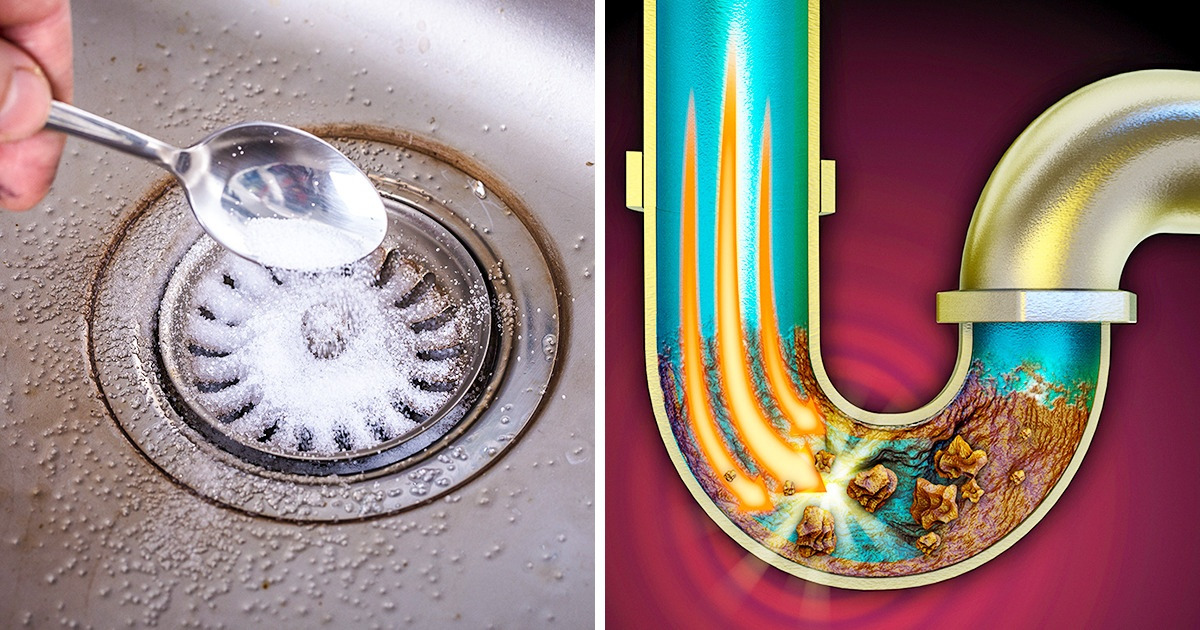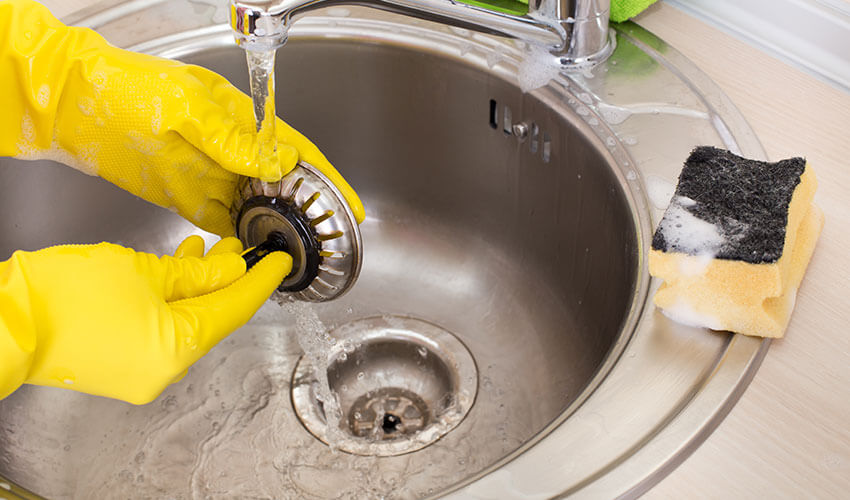What're your opinions regarding Easy Ways to Unclog Any Drain in Your Home?

It's not typical for your kitchen area sink to congest several times in one month. If your sink blocks two times a week, there's some difficulty taking place.
An obstructed cooking area drainpipe doesn't just slow down your tasks, it deteriorates your entire plumbing system, little by little. Below are some usual behaviors that urge sink clogs, and also just how to prevent them.
You require proper waste disposal
Recycling waste is terrific, however do you take notice of your natural waste also? Your kitchen ought to have two separate waste boxes; one for recyclable plastics as well as one more for natural waste, which can end up being garden compost.
Having actually a marked trash can will help you and your family avoid throwing pasta and other food remnants down the tubes. Usually, these residues take in wetness as well as end up being blockages.
The mistake isn't from your kitchen area sink in any way
Perhaps the issue isn't from your kitchen area sink, however the entire drain system. In such a situation, you may discover that other sinks and drains get obstructed every other week. You require a specialist plumbing solution to repair this.
You're tossing coffee away
Made use of coffee grounds and also coffee beans still soak up a considerable amount of dampness. They might seem little adequate to throw down the drainpipe, however as time goes on they begin to swell and also take up more space.
Your coffee premises must enter into natural waste disposal. Whatever fraction runs away (maybe while you're washing up) will be taken care of during your monthly cleaning.
You've been consuming a lot of oily foods
Your cooking area sink may still obtain obstructed despite having natural waste disposal. This might be since you have a diet regimen abundant in oily foods like cheeseburgers.
This oil coats the within pipes, making them narrower and even more clog-prone.
Utilize a plunger
- 1. Block the sink's overflow opening with a little cloth.
- 2. Put your cup-shaped sink plunger-- not a toilet bettor, which has a flange for sealing a toilet's electrical outlet-- over the sink drainpipe.
- 3. Fill the container with sufficient water to cover the plunger's mug.
- 4. Now dive up and down in short, fast motions to force as much air as feasible down into the drainpipe.
- 5. If the blockage dislodges, you must see the water in the sink rapidly recede.
Your pipeline wasn't dealt with correctly to begin with
If you've been doing none of the above, but still obtain regular obstructions in your kitchen sink, you should certainly call a plumber. There may be a trouble with exactly how your pipes were set up.
While your plumber arrives, look for any leakages or irregularities around your kitchen area pipes. Do not attempt to repair the pipelines yourself. This may create an accident or a kitchen area flooding.
Someone tried to clean their hair in the kitchen sink
There's a right time and also place for whatever. The kitchen area sink is simply not the appropriate place to clean your hair. Cleaning your hair in the kitchen sink will make it block eventually unless you make use of a drain catcher.
While a drain catcher may capture most of the after effects, some strands may still survive. If you have thick hair, this might be enough to decrease your drain and also eventually form a blockage.
There's even more dust than your pipes can handle
If you get fruits straight from a ranch, you may observe even more kitchen dirt than other people that go shopping from a mall. You can easily fix this by cleaning up the fruits and also veggies effectively before bringing them into the house.You require proper waste disposal
What to Do When Your Kitchen Sink Won’t Drain
Many of us have experienced something like this: one minute you are washing a pile of dirty dishes, and the next you hear a strange gurgling sound coming from the mechanical depths of your kitchen sink. The water is staying put, perhaps even changing colour and starting to rise; suddenly the soundtrack to Jaws is playing, and you realize you are dealing with… a clogged sink! Usually, you have to act quickly, but don’t panic just yet. Non-toxic home remedies and DIY solutions can do the trick, so before you call a plumber, read on to find out what you can do when your kitchen sink won’t drain.
What Causes Your Sink to Clog?
It’s great to know how to properly care for your kitchen sink so you can keep your drain and pipes running smoothly. For instance, some foods and products should never be washed down your drain, like grease, oil, and coffee grounds. Why? Grease and oil will eventually congeal at cold temperatures, and coffee grounds clump together when they harden. If you run hot water down your drain to flush them out, they will still cause trouble further down your pipe.
Dumping foods like meat, fibrous fruits and veggies like celery or banana peels, and starches such as noodles, rice and potatoes down your drain is also a big no, even if you have a garbage disposal. Food trapped in your disposer is a common problem, often leading to a blocked drain, so be sure not to overload it. Instead, put all your food scraps in your compost or green bin. Think of your drain as a major artery: you don’t want to clog it by putting harmful food and waste down your sink which can build up over time and cause problems.
Popular Home Remedies: What You’ll Need
Drain cleaners like Liquid Plumr or Drano often contain chemicals that are corrosive and harmful to the environment, so it’s best not to use them. Instead, try using natural remedies and the following life hacks to remove any debris. You’ll need to have the following items handy: rubber gloves (if you don’t want to dirty your hands), baking soda, salt, vinegar/lemons (or lots of lemon juice), a coat hanger, a plunger, a mug or container for scooping water, and some large buckets. You can also purchase a gadget called a Zip-It, which is an alternative to using a coat hanger. Ideally, you will already have many of these household items lying around, but a quick trip to a supermarket or dollar store should do the trick.
Boiling Water Techniques
The first thing you’ll need to do is remove everything from your sink (dishes, sponges, etc.) and start bailing out the excess water into a bucket. Once it is as empty as possible, and no water is filling back up into your sink, bring a kettle of water to a boil and dump its entire contents down the drain. Hot water can often loosen particles and clear a pathway.
If nothing happens after a few minutes, bail the water out and try again. If this is unsuccessful after a few attempts, pour half a cup of salt down your drain, followed by more boiling water. Wait for a few minutes to see if the water level starts to lower. Again, if nothing happens, you can try again, or try a new approach.
Baking Soda Techniques
Same as before, remove all water from your sink. Pour half a cup of baking soda followed by half a cup of white vinegar or lemon juice down your drain, and once the solution stops fizzing, cover with a stopper or a wet dish towel for about 15 minutes. Run hot water down the drain to check if the blockage is gone. You may need to repeat this a few times to clear the mess.
Alternatively, mix half a cup of salt with one cup of baking soda (do not add water), but for best results, you must let this sit for a few hours or overnight. Test it out after by pouring a pot of boiling hot water down the drain.
Go Fish: Coat Hanger or Zip-It Technique
If your sink is still causing you grief, unbend a wire coat hanger into a straight line with a hook, or use a Zip-It to fish out the clog. An alternative to properly snaking your drain, insert either of these tools down your drain until you encounter any resistance, and clear the clog by pulling it up. No luck? The clog might be further down.
Take the Plunge
If these previous techniques don’t work, a little bit of elbow grease may be required. For homeowners with a garbage disposal, always unplug it before plunging and check for any clogs inside. If you have a dishwasher, use a clamp to seal off the drain line – you don’t want any dirty water flowing back into your appliance! Once you have done that, you are ready to plunge. Fill the clogged sink with enough water so the rubber part is sealed tightly around your drain, and work the plunger until you feel something dislodge. It may take a few minutes of plunging for water to start flowing normally down the drain.
https://blog.homestars.com/what-to-do-when-your-kitchen-sink-wont-drain/

As an avid reader on Easy Ways to Unclog Any Drain in Your Home, I think sharing that piece of content was essential. Those who liked our post plz do not forget to share it. I cherish reading our article about Easy Ways to Unclog Any Drain in Your Home.
Top Article
Comments on “The Big Blockage - 6 Causes Behind Your Kitchen Sink's Poor Drainage”